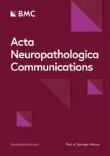
Abstract
Alcohol affects multiple neurotransmitter systems, notably the GABAergic system and has been recognised for a long time as particularly damaging during critical stages of brain development. Nevertheless, data from the literature are most often derived from animal or in vitro models. In order to study the production, migration and cortical density disturbances of GABAergic interneurons upon prenatal alcohol exposure, we performed immunohistochemical studies by means of the proliferation marker Ki67, GABA and calretinin antibodies in the frontal cortical plate of 17 foetal and infant brains antenatally exposed to alcohol, aged 15 weeks' gestation to 22 postnatal months and in the ganglionic eminences and the subventricular zone of the dorsal telencephalon until their regression, i.e., 34 weeks' gestation. Results were compared with those obtained in 17 control brains aged 14 weeks of gestation to 35 postnatal months. We also focused on interneu ron vascular migration along the cortical microvessels by confocal microscopy with double immunolabellings using Glut1, GABA and calretinin. Semi-quantitative and quantitative analyses of GABAergic and calretininergic interneuron density allowed us to identify an insufficient and delayed production of GABAergic interneurons in the ganglionic eminences during the two first trimesters of the pregnancy and a delayed incorporation into the laminar structures of the frontal cortex. Moreover, a mispositioning of GABAergic and calretininergic interneurons persisted throughout the foetal life, these cells being located in the deep layers instead of the superficial layers II and III. Moreover, vascular migration of calretininergic interneurons within the cortical plate was impaired, as reflected by low numbers of interneurons observed close to the cortical perforating vessel walls that may in part explain their abnormal intracortical distribution. Our results are globally concordant with tho se previously obtained in mouse models, in which alcohol has been shown to induce an interneuronopathy by affecting interneuron density and positioning within the cortical plate, and which could account for the neurological disabilities observed in children with foetal alcohol disorder spectrum.



Δεν υπάρχουν σχόλια:
Δημοσίευση σχολίου
Σημείωση: Μόνο ένα μέλος αυτού του ιστολογίου μπορεί να αναρτήσει σχόλιο.